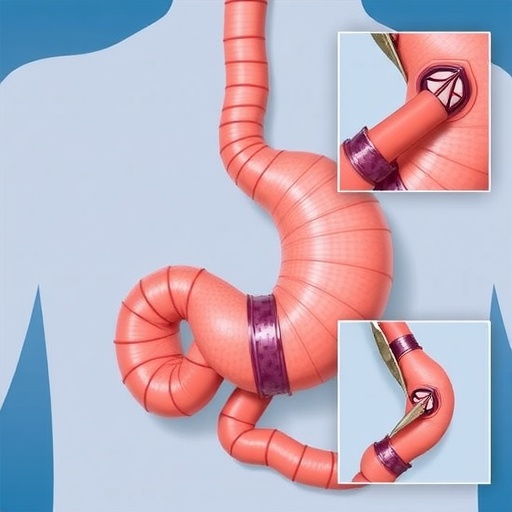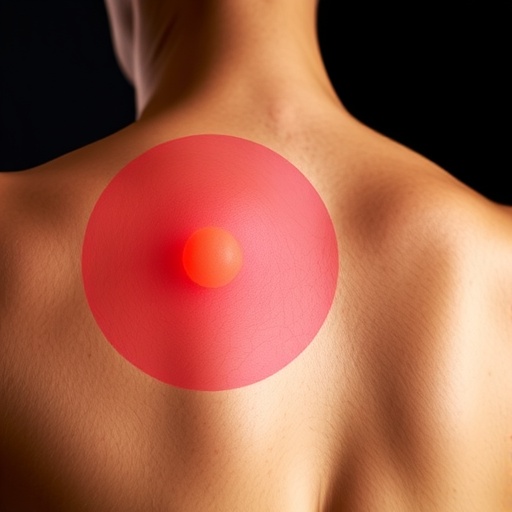A novel surgical technique called modified overlap anastomosis has recently emerged as a promising approach for treating Siewert type II and III adenocarcinoma, particularly at the esophagogastric junction. Adenocarcinomas of this nature present significant challenges in terms of surgical intervention due to the complexities involved in the anatomical locations of these cancers. The modified overlap anastomosis addresses these challenges in a manner that enhances postoperative outcomes and extends survival rates for affected patients.
The innovation surrounding this method lies in its design, which allows for a tighter and more secure connection between the esophagus and the stomach. This connection is essential due to the unique anatomical and physiological characteristics of the esophagogastric junction. When traditional anastomotic techniques fail to provide adequate function or protection from complications, the modified overlap anastomosis presents itself as a viable alternative, promising improved efficacy and fewer complications.
One notable aspect of modified overlap anastomosis is the way it reduces the potential for leakage, a severe complication often seen in esophageal surgeries. This is achieved by creating a more robust junction that withstands the pressures exerted during digestion and minimizes the risk of postoperative complications. Research highlights that this technique may significantly decrease the occurrence of anastomotic leaks, which can lead to severe morbidity and even mortality if not addressed promptly.
Furthermore, the modified overlap anastomosis technique enriches the surgical field by integrating advanced surgical skills and preoperative planning. Surgeons must meticulously evaluate the patient’s specific condition, taking into account tumor size, location, and overall health, which ensures that the application of this method is tailored to individual needs. This patient-centered approach marks a significant advancement in surgical oncology, emphasizing the importance of personalized medicine.
The clinical application of this innovative technique has yielded promising results in recent studies. Patients undergoing modified overlap anastomosis for Siewert type II and III adenocarcinoma have shown improved postoperative recovery rates and enhanced quality of life. Data indicates a trend toward longer survival times, which is a crucial benchmark in oncological surgery. The careful assessment of patient outcomes in trials underscores the potential this technique has to alter the landscape of surgical treatments for esophagogastric cancers.
One of the critical aspects of advancing medical procedures is understanding their implications on long-term care and follow-up. Studies reveal that patients undergoing the modified overlap anastomosis require diligent monitoring during their postoperative period. The surgeon’s role becomes pivotal, as they must evaluate not only the immediate surgical outcomes but also the long-term survival rates and recurrence patterns. As this technique gains traction in clinical practice, establishing standardized protocols for follow-up care will be essential.
The ongoing research surrounding this surgical method emphasizes the importance of multi-disciplinary collaboration. Surgeons, oncologists, and nutritionists must work together to deliver comprehensive care to patients. As the implications of modified overlap anastomosis unfold, it’s imperative to continue refining surgical techniques while also addressing the nutritional and psychological needs of patients combating cancer. This holistic approach helps in improving overall outcomes and enhancing the patient care experience.
Moreover, the modified overlap anastomosis holds potential implications beyond esophagogastric junction cancers. Its success could inspire surgical innovations in treating similar malignancies. As medical professionals observe the benefits this technique provides for Siewert type II and III adenocarcinoma, there may be applications for gastrointestinal cancers that necessitate similar surgical considerations. This ripple effect could lead to broader enhancements in oncological surgery across multiple cancer types.
As with any emerging medical technique, it is essential to approach modified overlap anastomosis with the understanding that ongoing research and data collection are fundamental to its evolution. Surgeons and researchers must remain vigilant in assessing the safety, efficacy, and long-term outcomes associated with this surgical method. Continuous improvements in surgical tools and techniques will further enhance surgical precision and patient safety.
The peer-reviewed study led by Fan, Hou, and Zhang et al. serves as a crucial touchpoint in understanding the clinical application value of this innovative technique. Their research brings forth vital insights that can lead to a paradigm shift in treating Siewert type II and III adenocarcinoma. The growing body of evidence advocating for modified overlap anastomosis underscores the importance of adapting surgical practices to meet the demands of complex cancer cases.
Ultimately, the modified overlap anastomosis could represent a significant advancement in the surgical treatment of esophagogastric junction cancers. With ongoing research, education, and collaboration among medical professionals, this technique may help to redefine standard practices, providing patients with better outcomes and increased hope in their fight against cancer. The implications of this surgical method extend beyond the operating room, signaling a new era for oncological advancements that centers around innovative, patient-focused care.
In conclusion, the modified overlap anastomosis symbolizes a promising frontier in surgical oncology. By prioritizing patient-centered approaches and focusing on long-term outcomes, medical professionals can embrace new horizons of hope for those battling Siewert type II and III adenocarcinoma. As the surgical community continues to explore the potential of this innovative approach, it is essential to engage with ongoing research, share knowledge, and refine techniques to provide the best possible care for patients. The future of surgical oncology lies in such innovations, paving the way for improved survival rates and better patient quality of life.
Subject of Research: Modified overlap anastomosis for Siewert type II and III adenocarcinoma of the esophagogastric junction.
Article Title: Clinical application value of modified overlap anastomosis for Siewert type II and III adenocarcinoma of esophagogastric junction.
Article References:
Fan, Y., Hou, L., Zhang, H. et al. Clinical application value of modified overlap anastomosis for Siewert type II and III adenocarcinoma of esophagogastric junction.
J Cancer Res Clin Oncol 151, 327 (2025). https://doi.org/10.1007/s00432-025-06379-4
Image Credits: AI Generated
DOI: https://doi.org/10.1007/s00432-025-06379-4
Keywords: Modified overlap anastomosis, Siewert type II adenocarcinoma, Siewert type III adenocarcinoma, esophagogastric junction, surgical oncology, anastomosis, surgical technique, cancer surgery, patient outcomes, personalized medicine.
Tags: adenocarcinoma treatment techniquesadvanced surgical techniques in canceranastomotic leak reductioncancer survival rate enhancementchallenges in esophageal surgeryeffective cancer treatment methodologiesesophageal cancer surgical interventionsesophagogastric junction surgerymodified overlap anastomosispostoperative outcomes improvementSiewert type II and III cancersurgical innovation in oncology





